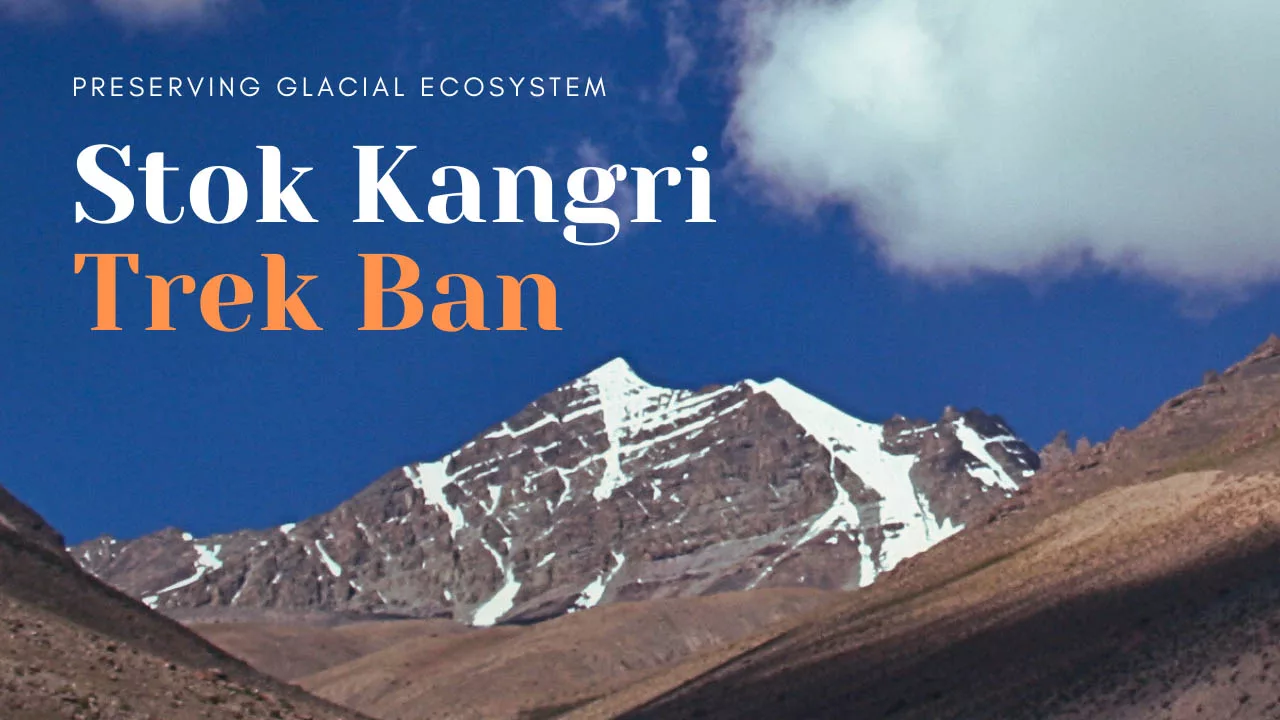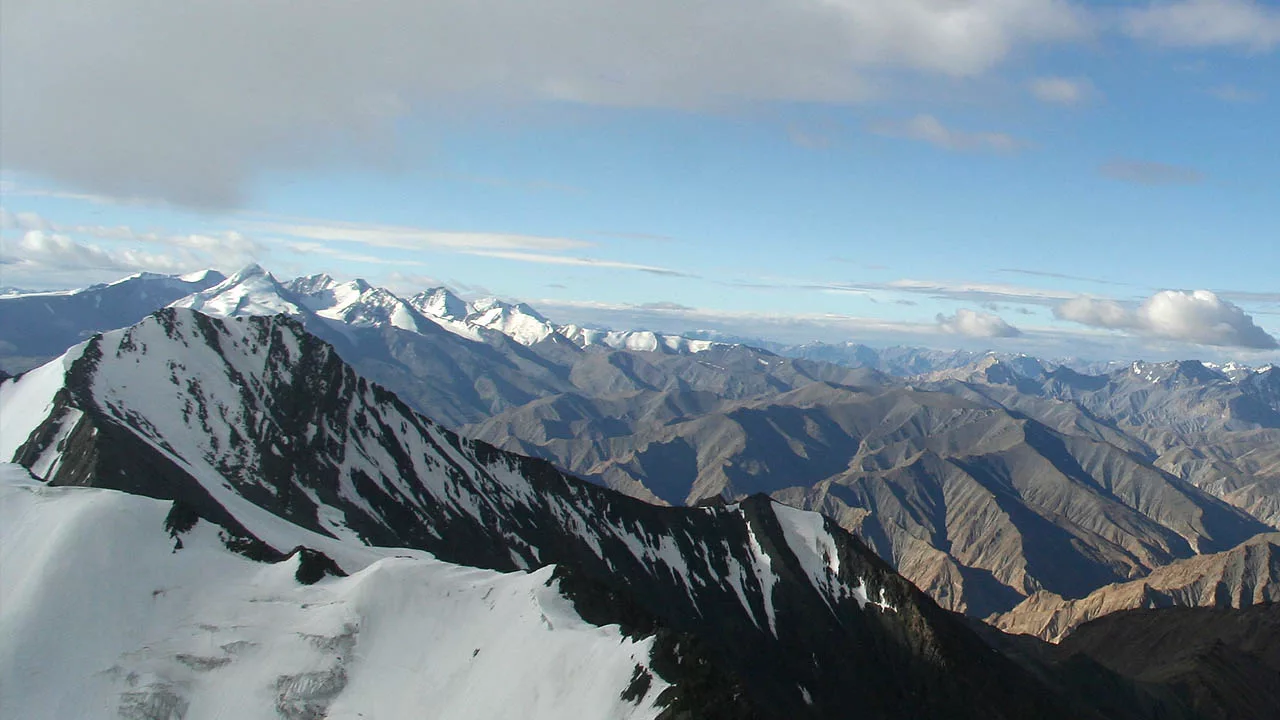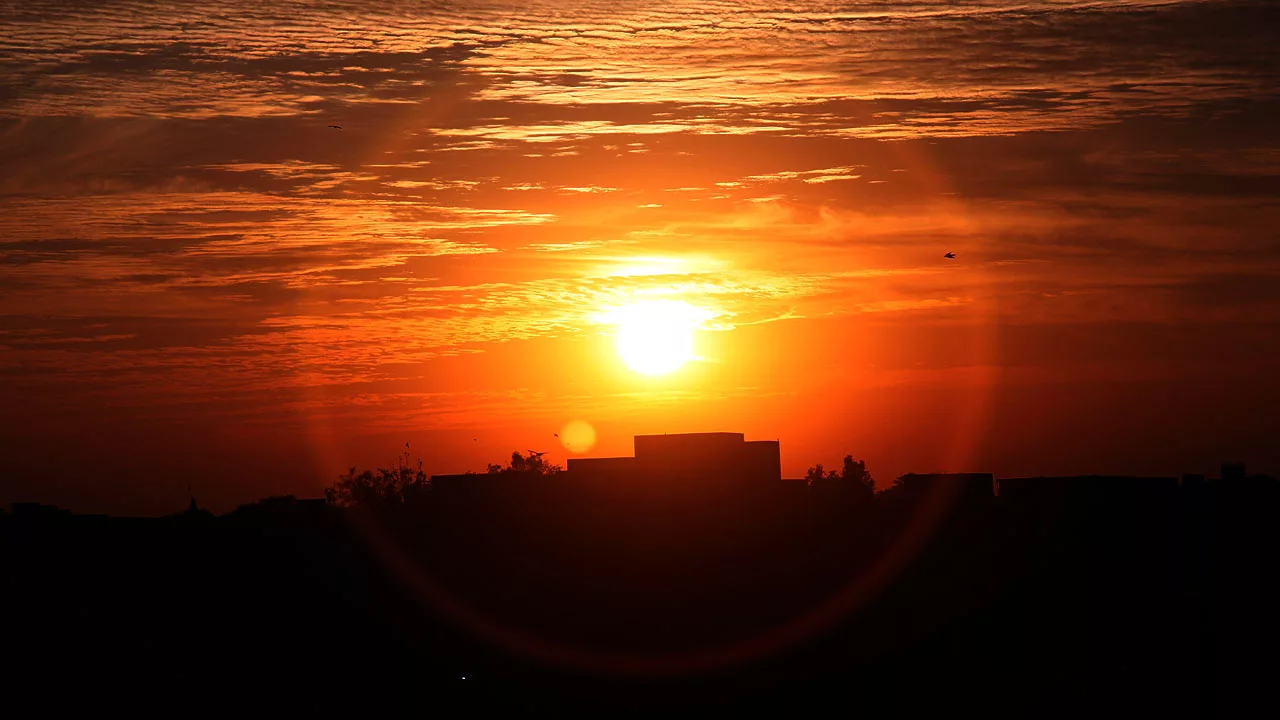Stok Kangri Trek Ban: Preserving Ladakh’s Glacial Ecosystem
Blogs
Introduction:
Ladakh, a region renowned for its breathtaking landscapes and challenging trekking trails, is taking a crucial step to address the alarming issue of receding glaciers. In response to the depletion of the Stok mountain glaciers and the subsequent water crisis during the summer season, the Ladakh Autonomous Hill Development Council (LAHDC), Leh, has issued a ban on all trekking expeditions to the highly sought-after Stok Kangri mountain range.

Reasons for Stok Kangri Trek Ban:
The decision to temporarily close Stok Kangri to trekking activities stems from environmental concerns, over-tourism, and the adverse impact on the delicate ecosystem of the region. The All-Ladakh Tour Operators Association, recognizing the need for conservation, had previously closed Stok Kangri due to over-tourism-related environmental issues, including the visible receding of glaciers.
LAHDC Order:
The LAHDC order explicitly declares, “Due to the depletion of the Stok mountain glaciers and the environmental issue, we order the temporary closure with immediate effect of all kinds of expeditions to Stok Kangri carried out by travel agencies, Army, Air Force, and paramilitary forces.”
Water Crisis and Glacier Depletion:
The water crisis faced by many parts of Leh and Kargil, especially during the tourist season, further highlights the urgency of the situation. Studies conducted by experts reveal a concerning trend, with glaciers in Jammu & Kashmir and Ladakh receding by 25% over the past 60 years. Ladakh, home to nearly 5,000 glaciers, is witnessing the impact of climate change on its fragile ecosystem.
El Niño events can have a significant impact on the Himalayas. During an El Niño event, the Himalayas typically receive less rainfall and snowfall. This can lead to droughts, water shortages, and crop failures. Learn more about El Nino and Future Challenges for the Himalayas & Beyond

Scientific Studies Behind Stok Kangri Trek Ban:
Recent scientific studies have illuminated specific glaciers, like the Parkachik glacier in Ladakh, which scientists predict will develop three lakes of different dimensions due to subglacial over-deepening. Researchers from the Wadia Institute of Himalayan Geology have undertaken a study detailing the morphological and dynamic changes of the Parkachik glacier in the Suru River valley. Moreover, research on the Stok glacier highlights its unique characteristics; it is a north-east oriented debris-free glacier, resembling others in the northern Zanskar region.
Conclusion:
The temporary ban on Stok Kangri trekking expeditions serves as a crucial step towards the preservation of Ladakh’s glacial ecosystem. It is a call to action for sustainable tourism practices, emphasizing the need to strike a balance between adventure tourism and environmental conservation. As adventure enthusiasts, let us actively respect these measures and actively contribute to the long-term health of the majestic landscapes we are privileged to explore.
Recommended For You:

